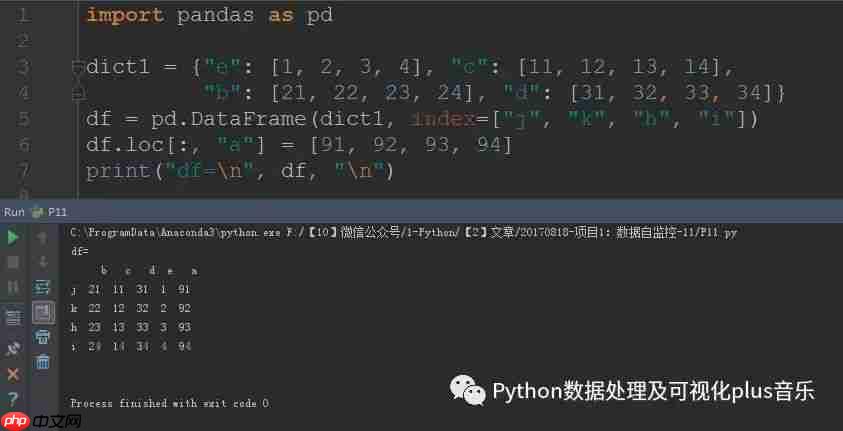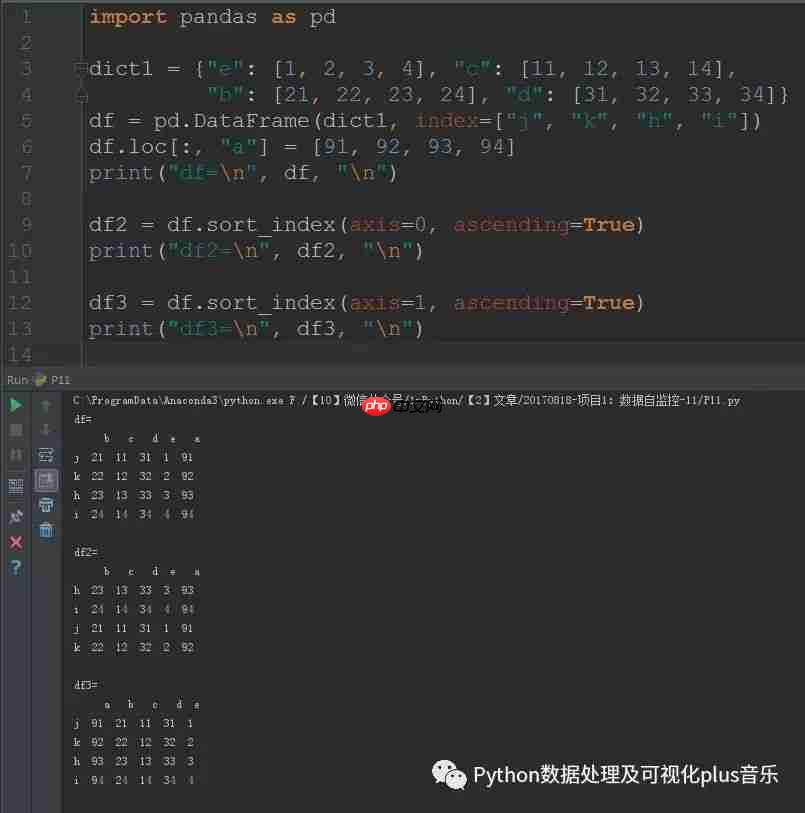在这个项目实战中,我们将继续探讨dataframe的行列索引重排序操作。今天的重点是如何对dataframe进行索引排序和索引输出。让我们开始吧!
首先,我们需要构建一个DataFrame。我们使用字典来创建DataFrame,并通过
index
loc
import pandas as pd
dict1 = {"e": [1, 2, 3, 4], "c": [11, 12, 13, 14],
"b": [21, 22, 23, 24], "d": [31, 32, 33, 34]}
df = pd.DataFrame(dict1, index=["j", "k", "h", "i"])
df.loc[:, "a"] = [91, 92, 93, 94]
print("df=\n", df, "\n")运行结果:

接下来,我们将展示如何对DataFrame的索引进行排序。
sort_index
df2 = df.sort_index(axis=0, ascending=True)
print("df2=\n", df2, "\n")
df3 = df.sort_index(axis=1, ascending=True)
print("df3=\n", df3, "\n")运行结果:

最后,我们将展示如何将DataFrame的索引转化为列表输出。我们可以使用
tolist()
index.values
ind = df.index.tolist()
print("ind=", ind)
print("ind类型", type(ind), "\n")
ind2 = df.index.values
print("ind2=", ind2)
print("ind2类型", type(ind2))运行结果:

通过以上步骤,我们成功地对DataFrame进行了索引排序和索引输出操作。这对于数据处理和分析非常有用,希望这些技巧能帮助您更好地管理和分析数据。
以上就是【项目实战】自监控-11-DataFrame索引操作(下篇)的详细内容,更多请关注php中文网其它相关文章!

每个人都需要一台速度更快、更稳定的 PC。随着时间的推移,垃圾文件、旧注册表数据和不必要的后台进程会占用资源并降低性能。幸运的是,许多工具可以让 Windows 保持平稳运行。

Copyright 2014-2025 https://www.php.cn/ All Rights Reserved | php.cn | 湘ICP备2023035733号